Article by Giacomo Guzzon We explore designing sustainable landscapes in hot and dry climates by taking a closer look at the Lake Garden by Iúri Chagas, in Olhão, Algarve, Portugal Since I am a landscape architect who works and lives in London, you wouldn’t expect that I often deal with schemes that have to withstand drought and prolonged periods of heat, but the reality is that London is getting hotter and dryer, and in the UK there is an increasing need for water-wise and sustainable design. Analysing projects facing such problems is crucial for every designer who intends to create landscapes that are both visually appealing and sustainable. Every landscape architect should be familiar with sustainable interventions that are universal, regardless of the climate he or she is working in.

Lake Garden by Iúri Chagas
Designing Sustainable Landscapes
The Lake Garden in southern Portugal illustrates some important sustainable design interventions. Designed by landscape architect Iuri Chagas, the Lake Garden covers 900 square metres in the Algarve, an area that gets more than 3000 hours of sun per year and with an average rainfall of only 500 mm per year.
Meticulous Choice of Native and Drought-Tolerant Species
Designing planting schemes in a dry and hot climate is surely more challenging than working in a mild cool environment where basically everything thrives. In such arid Portuguese locations, the rule to follow pretty strictly is ‘the right plant for the right place’ because otherwise there is little chance that the planting will be successful. Native plants are the most adapted to the climatic and edaphic conditions of an area and therefore should be prioritized, but often there is a need to enrich a scheme with species that are not native but equally tough and which possess special characteristics.
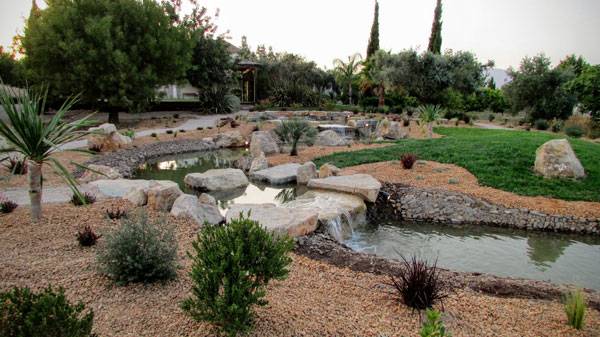
Lake Garden by Iúri Chagas
Using Mediterranean Species
In the Lake Garden the bulk of the plants is native and reflects typical Mediterranean species such as Olea europaea (olive), Prunus dulcis (almond) and very common shrubs, like Arbutus unedo, Myrtus communis, Viburnus tinus, Nerium oleander, Lavandula and Rosmarinus offinalis. Nevertheless, the designer also included, among native species, some exotic grasses and perennials to add drama and give the garden a more ornamental and dynamic look. He included, in particular, ornamental grasses to add movement to the planting, such as Pennisteum ‘Rubrum’, Stipa tenuissima, Festuca glauca and perennials like Phormium tenax.
Working with Local Materials
Considering that the Algarve region’s topography is hilly and the geology rocky, I would expect a lot of local rocks in the garden. The Algarve coast is famous for its picturesque limestone cliffs, a material widely used in the Lake Garden.
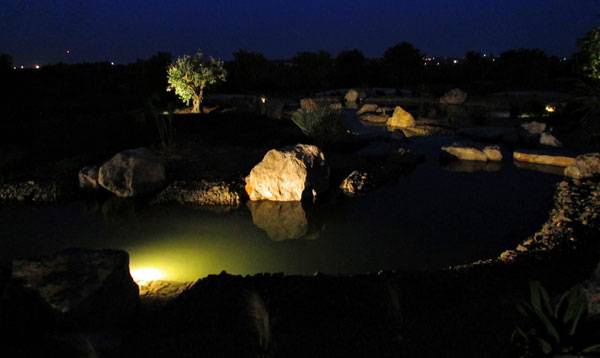
Lake Garden by Iúri Chagas
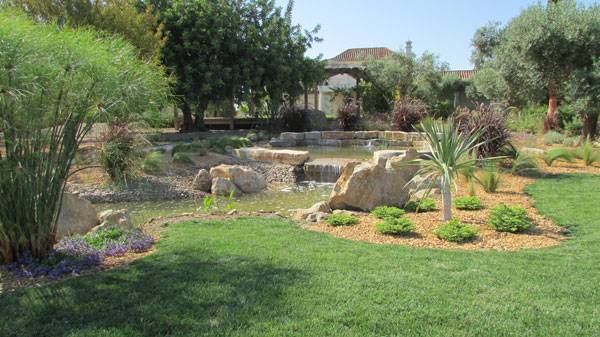
Lake Garden by Iúri Chagas
Using Water as a Means of Habitat Creation
This garden has several ponds that follow the sloping topography of the site and are connected by a stream which meanders through the garden and encloses areas of lawn and planting. Using water in a landscape that is actually dry seems at first glance a controversial decision, but if you consider the amount of habitat that a simple pond could create for the local fauna, then the decision to use water seems an environmentally sound one. Water bodies in this garden not only convey a ‘refreshing’ illusion to its users, especially in this hot location, but more importantly, they attract many wildlife species. All ponds’ banks in this garden are gently sloped with rocks and vegetation, creating the ideal conditions for insects, spiders, amphibians, reptiles and small mammals to easily access the water. The banks were covered with pebbles from the Algarve rivers, which helps to create riverside conditions similar to those found in the area.
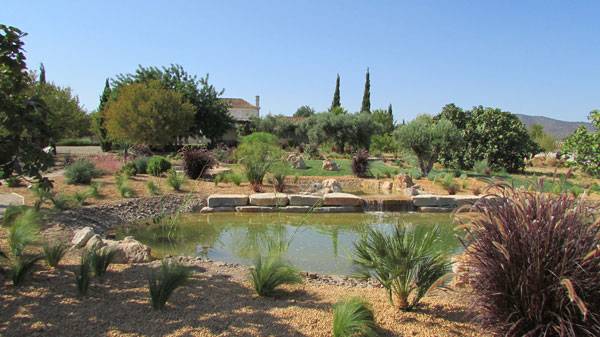
Lake Garden by Iúri Chagas
Horticultural Practices
Since water is very limited in the area, every horticultural practice is aimed to save it and to keep the soil moist as long as possible. The designer decided to mulch all flower beds with gravel from the region. The gravel layer keeps the soil moist and inhibits weeds growth.

Lake Garden by Iúri Chagas
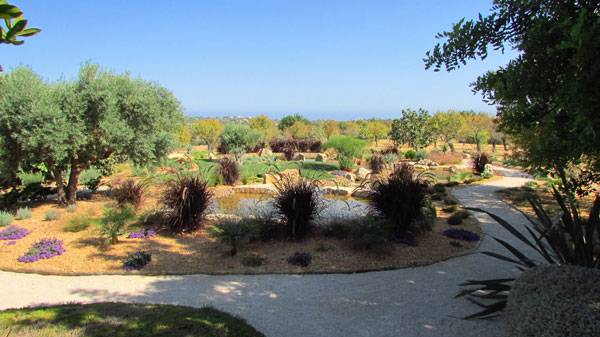
Lake Garden by Iúri Chagas
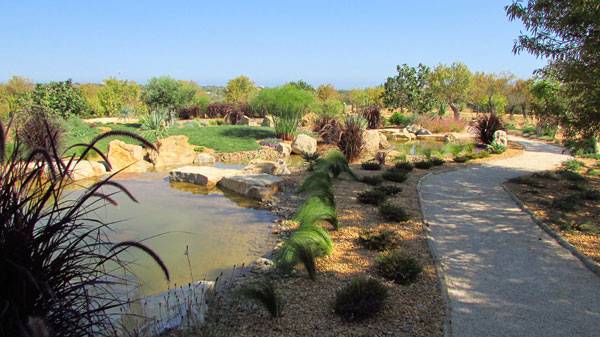
Lake Garden by Iúri Chagas
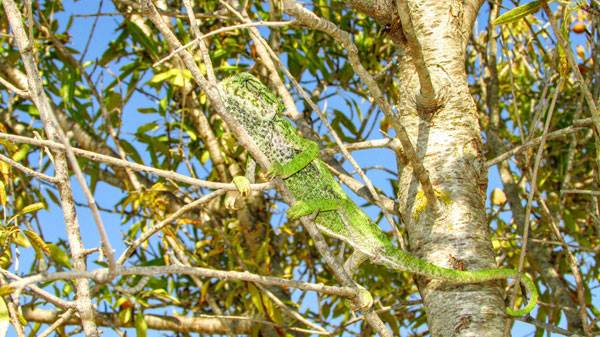
Lake Garden by Iúri Chagas
Full Project Credits For Lake Garden :
Project: Lake Garden Designer: Iúri Chagas Location: Olhão, Algarve (Portugal) Size: 900sq/m Completion Date: 2015 Client: Private Landscape Contractors: Jardimgarve Recommended Reading:
- Becoming an Urban Planner: A Guide to Careers in Planning and Urban Design by Michael Bayer
- Sustainable Urbanism: Urban Design With Nature by Douglas Farrs
Article by Giacomo Guzzon
Published in Blog


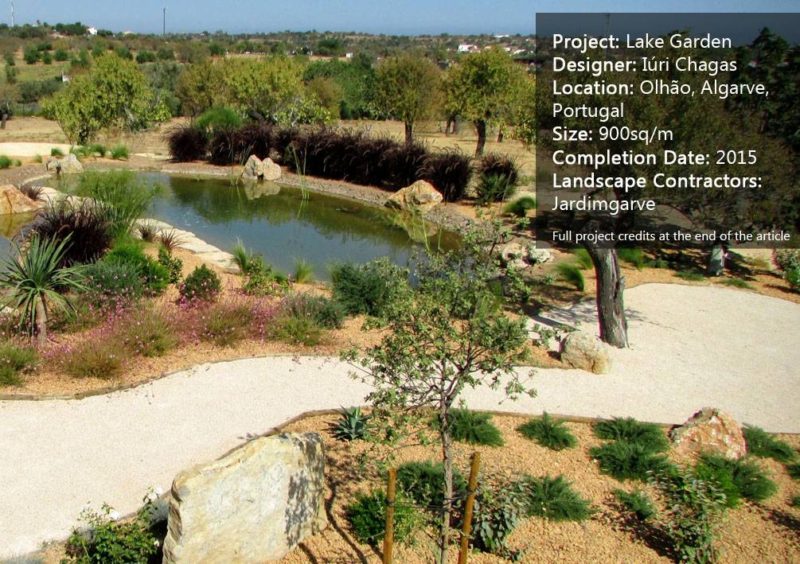




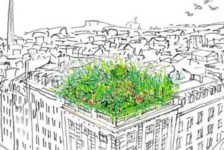
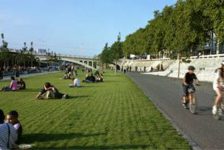
Pingback: Living In a Drought – Ways to Conserve and Save Water | Photo Remodeling Analysis